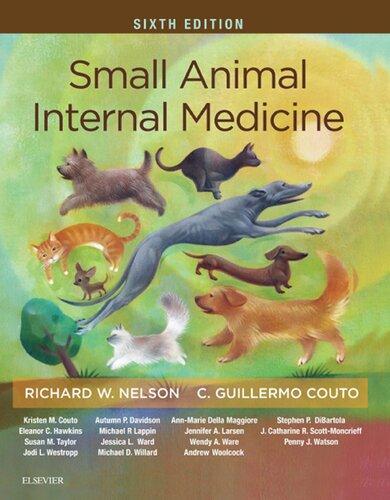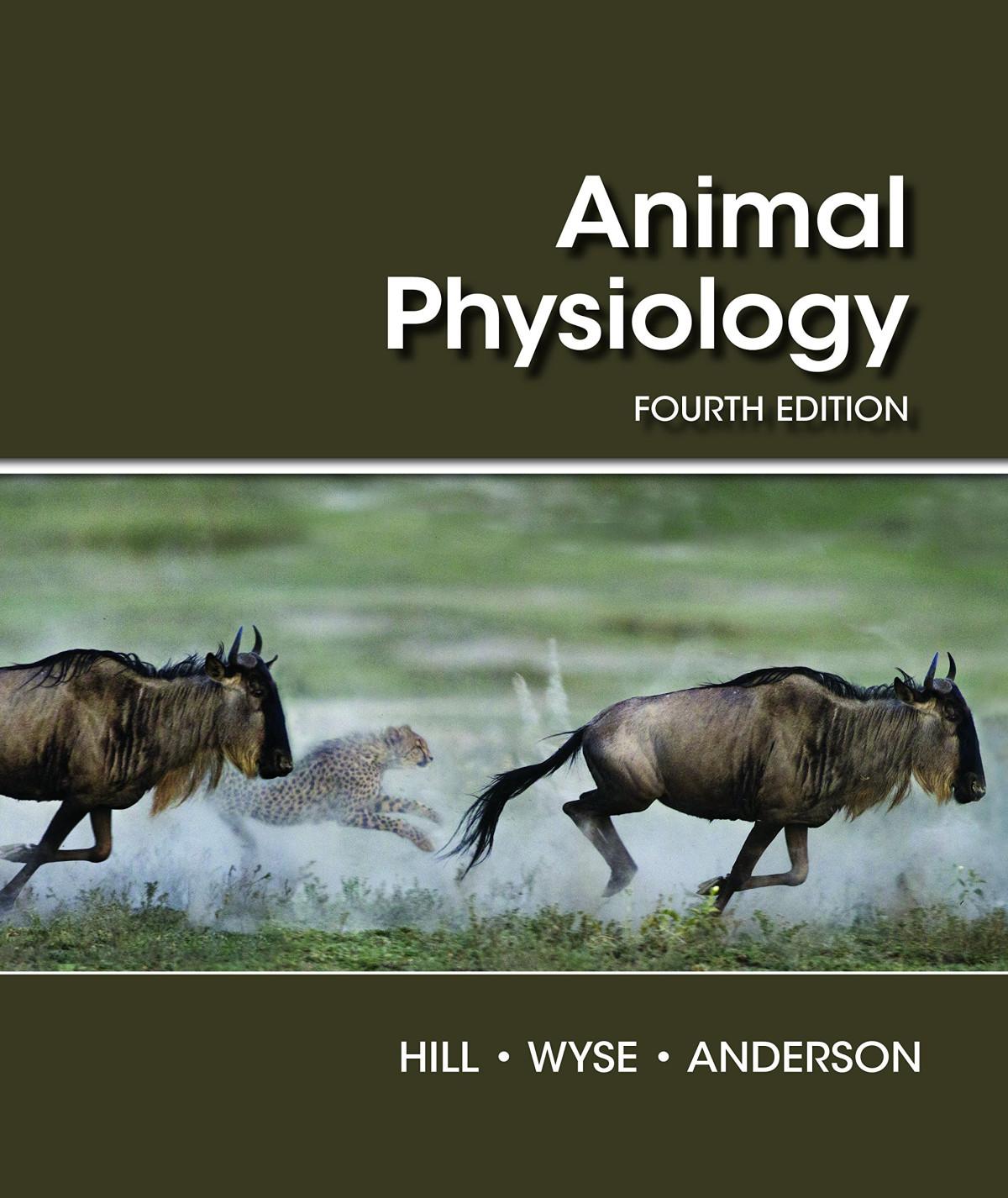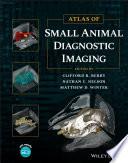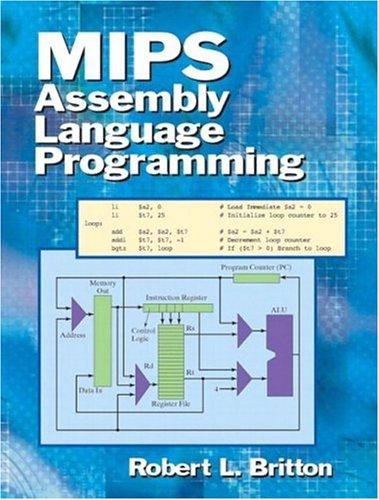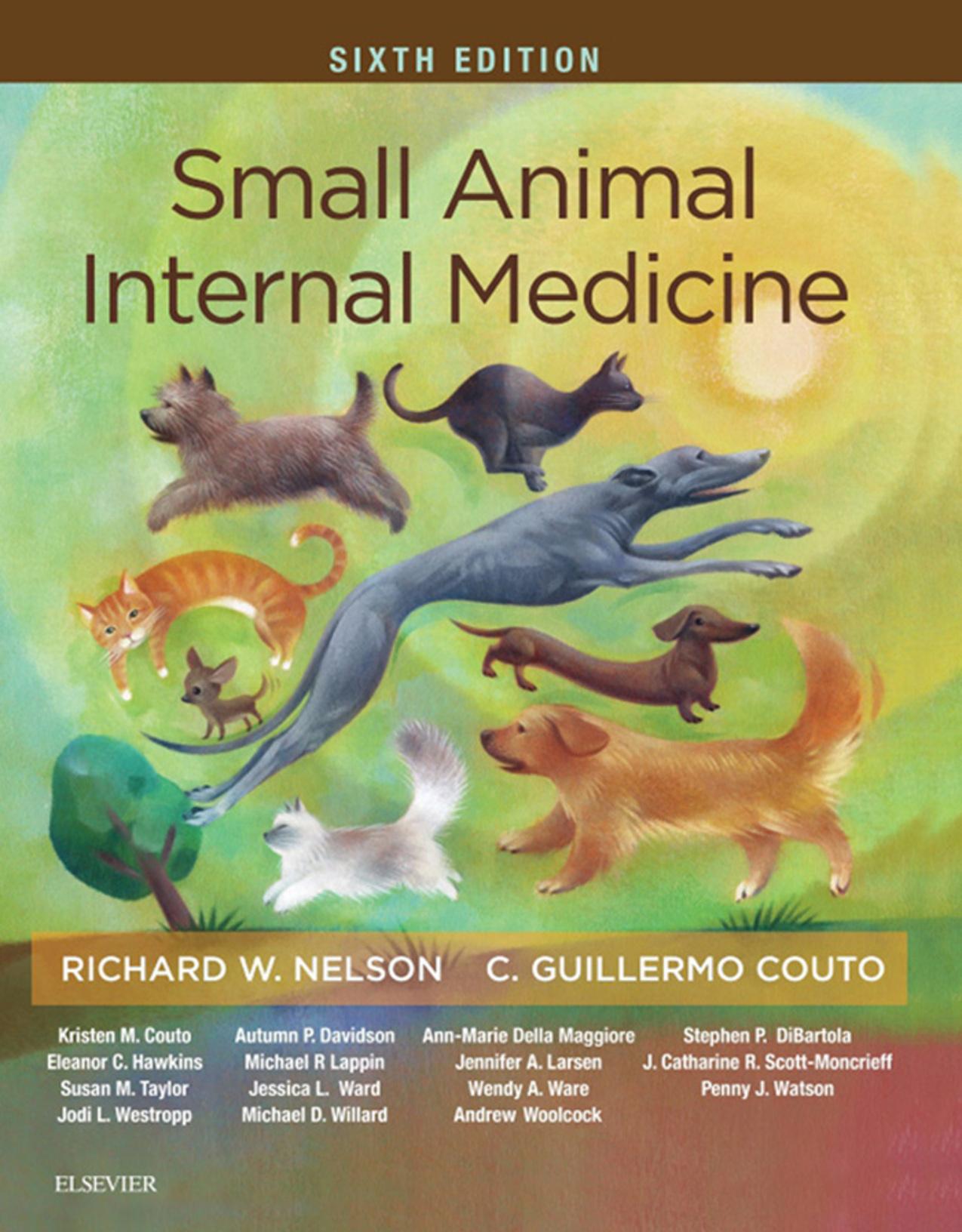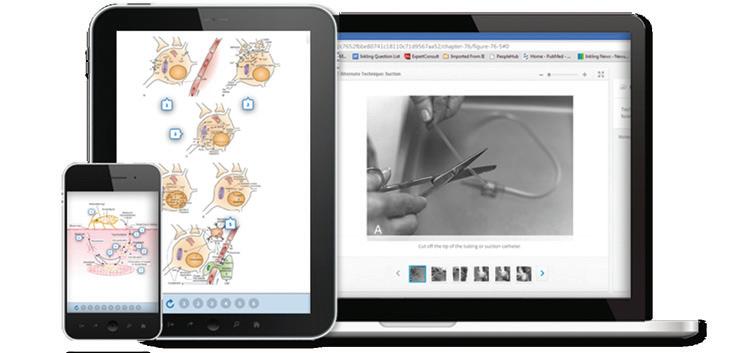Instant digital products (PDF, ePub, MOBI) ready for you
Download now and discover formats that fit your needs...
Large Animal Internal Medicine, 6th Edition Bradford P. Smith
https://ebookmass.com/product/large-animal-internal-medicine-6thedition-bradford-p-smith/
ebookmass.com
Animal Physiology 4th Edition Richard W. Hill
https://ebookmass.com/product/animal-physiology-4th-edition-richard-whill/
ebookmass.com
Atlas of Small Animal Diagnostic Imaging Nathan C. Nelson
https://ebookmass.com/product/atlas-of-small-animal-diagnosticimaging-nathan-c-nelson/
ebookmass.com
Strategies for e-business : creating value through electronic and mobile commerce : concepts and cases Third Edition. Edition Enders
https://ebookmass.com/product/strategies-for-e-business-creatingvalue-through-electronic-and-mobile-commerce-concepts-and-cases-thirdedition-edition-enders/ ebookmass.com
The Economy and Business Environment of Vietnam 1st ed.
Edition Roderick Macdonald
https://ebookmass.com/product/the-economy-and-business-environment-ofvietnam-1st-ed-edition-roderick-macdonald/
ebookmass.com
Scritch Scratch Lindsay Currie
https://ebookmass.com/product/scritch-scratch-lindsay-currie/
ebookmass.com
Critical Service Learning Toolkit: Social Work Strategies for Promoting Healthy Youth Development Annette Johnson
https://ebookmass.com/product/critical-service-learning-toolkitsocial-work-strategies-for-promoting-healthy-youth-developmentannette-johnson/ ebookmass.com
Dirty Secret Love (Heartwood Lake Secret Billionaires Book 2) Claudia Burgoa
https://ebookmass.com/product/dirty-secret-love-heartwood-lake-secretbillionaires-book-2-claudia-burgoa/
ebookmass.com
MIPS assembly language programming Robert Britton
https://ebookmass.com/product/mips-assembly-language-programmingrobert-britton/
ebookmass.com
https://ebookmass.com/product/puppy-kisses-forever-home-3-1st-editionlucy-gilmore/
ebookmass.com
PART ONE CARDIOVASCULAR SYSTEM DISORDERS, 1
Wendy A. Ware and Jessica L. Ward
1 Clinical Manifestations of Cardiac Disease, 1
2 Diagnostic Tests for the Cardiovascular System, 13
3 Management of Heart Failure, 55
4 Cardiac Arrhythmias and Antiarrhythmic Therapy, 77
5 Congenital Cardiac Disease, 100
6 Acquired Valvular and Endocardial Disease, 119
7 Myocardial Diseases of the Dog, 141
8 Myocardial Diseases of the Cat, 158
9 Pericardial Disease and Cardiac Tumors, 174
10 Pulmonary Hypertension and Heartworm Disease, 190
11 Systemic Arterial Hypertension, 211
12 Thromboembolic Disease, 221
PART TWO RESPIRATORY SYSTEM DISORDERS, 240
Eleanor C. Hawkins
13 Clinical Manifestations of Nasal Disease, 240
14 Diagnostic Tests for the Nasal Cavity and Paranasal Sinuses, 247
15 Disorders of the Nasal Cavity, 257
16 Clinical Manifestations of Laryngeal and Pharyngeal Disease, 271
17 Diagnostic Tests for the Larynx and Pharynx, 273
18 Disorders of the Larynx and Pharynx, 277
19 Clinical Manifestations of Lower Respiratory Tract Disorders, 282
20 Diagnostic Tests for the Lower Respiratory Tract, 287
21 Disorders of the Trachea and Bronchi, 321
22 Disorders of the Pulmonary Parenchyma and Vasculature, 340
23 Clinical Manifestations and Diagnostic Tests of Pleural Cavity and Mediastinal Disease, 360
24 Disorders of the Pleural Cavity and Mediastinum, 371
25 Emergency Management of Respiratory Distress, 379
PART THREE DIGESTIVE SYSTEM DISORDERS, 389
Michael D. Willard
26 Clinical Manifestations of Gastrointestinal Disorders, 389
27 Diagnostic Tests for the Alimentary Tract, 412
28 General Therapeutic Principles, 432
29 Disorders of the Oral Cavity, Pharynx, and Esophagus, 447
30 Disorders of the Stomach, 462
31 Disorders of the Intestinal Tract, 474
32 Disorders of the Peritoneum, 510
PART FOUR HEPATOBILIARY AND EXOCRINE PANCREATIC DISORDERS, 518
Penny J.
Watson
33 Clinical Manifestations of Hepatobiliary and Pancreatic Disease, 518
34 Diagnostic Tests for the Hepatobiliary and Pancreatic System, 531
35 Hepatobiliary Diseases in the Cat, 561
36 Hepatobiliary Diseases in the Dog, 584
37 The Exocrine Pancreas, 620
PART FIVE URINARY TRACT DISORDERS, 649
Stephen P. DiBartola and Jodi L. Westropp
38 Clinical Manifestations of Urinary Disorders, 649
39 Diagnostic Tests for the Urinary System, 658
40 Glomerular Disease, 675
41 Acute Kidney Injury and Chronic Kidney Disease, 686
42 Bacterial Cystitis, Pyelonephritis, and Prostatitis in the Dog and Cat, 704
43 Canine and Feline Urolithiasis, 712
44 Obstructive and Nonobstructive Feline Idiopathic Cystitis, 724
45 Disorders of Micturition, 730
PART SIX ENDOCRINE DISORDERS, 740
Richard W. Nelson and Ann-Marie Della Maggiore
46 Disorders of the Hypothalamus and Pituitary Gland, 740
47 Disorders of the Parathyroid Gland, 758
48 Disorders of the Thyroid Gland, 767
49 Disorders of the Endocrine Pancreas, 806
50 Disorders of the Adrenal Gland, 857
PART SEVEN METABOLIC AND ELECTROLYTE DISORDERS, 898
Jennifer A. Larsen and Ann-Marie Della Maggiore
51 Weight Loss and Obesity, 898
52 Hyperlipidemia, 908
53 Electrolyte Imbalances, 915
PART EIGHT REPRODUCTIVE SYSTEM DISORDERS, 935
Autumn P. Davidson
54 The Practice of Theriogenology, 935
55 Clinical Conditions of the Bitch and Queen, 953
56 Clinical Conditions of the Dog and Tom, 990
57 Neonatology and Pediatrics, 1007
PART NINE NERVOUS SYSTEM AND NEUROMUSCULAR DISORDERS, 1037
Susan M. Taylor
58 Lesion Localization and the Neurologic Examination, 1037
59 Diagnostic Tests for Nervous System and Neuromuscular Disorders, 1063
60 Intracranial Disorders, 1074
61 Loss of Vision and Pupillary Abnormalities, 1084
62 Seizures and Other Paroxysmal Events, 1093
63 Head Tilt, 1109
64 Encephalitis, Myelitis, and Meningitis, 1117
65 Disorders of the Spinal Cord, 1130
66 Disorders of Peripheral Nerves and the Neuromuscular Junction, 1157
67 Disorders of Muscle, 1174
PART TEN JOINT DISORDERS, 1187
Susan M. Taylor
68 Clinical Manifestations of and Diagnostic Tests for Joint Disorders, 1187
69 Disorders of the Joints, 1195
PART ELEVEN IMMUNE-MEDIATED
DISORDERS,
1211
Andrew Woolcock and J. Catharine R. Scott-Moncrieff
70 Pathogenesis of Immune-Mediated Disorders, 1211
71 Diagnostic Testing for Immune-Mediated Disease, 1215
72 Treatment of Primary Immune-Mediated Diseases, 1220
73 Common Immune-Mediated Diseases, 1231
PART TWELVE ONCOLOGY, 1257
C. Guillermo Couto
74 Cytology, 1257
75 Principles of Cancer Treatment, 1265
76 Practical Chemotherapy, 1269
77 Complications of Cancer Chemotherapy, 1276
78 Approach to the Patient With a Mass, 1288
79 Lymphoma, 1294
80 Leukemias, 1311
81 Selected Neoplasms in Dogs and Cats, 1322
PART THIRTEEN HEMATOLOGY, 1340
C. Guillermo Couto
82 Anemia, 1340
83 Clinical Pathology in Greyhounds and Other Sighthounds, 1360
84 Erythrocytosis, 1368
85 Leukopenia and Leukocytosis, 1371
86 Combined Cytopenias and Leukoerythroblastosis, 1381
87 Disorders of Hemostasis, 1387
88 Lymphadenopathy and Splenomegaly, 1407
89 Hyperproteinemia, 1420
90 Fever of Undetermined Origin, 1423
PART FOURTEEN INFECTIOUS DISEASES, 1427
Michael R. Lappin
91 Laboratory Diagnosis of Infectious Diseases, 1427
92 Practical Antimicrobial Chemotherapy, 1436
93 Prevention of Infectious Diseases, 1448
94 Polysystemic Bacterial Diseases, 1457
95 Polysystemic Rickettsial Diseases, 1469
96 Polysystemic Viral Diseases, 1485
97 Polysystemic Mycotic Infections, 1502
98 Polysystemic Protozoal Infections, 1514
99 Zoonoses, 1532
Section Editors

Richard W. Nelson, DVM, DACVIM (Internal Medicine), Professor Emeritus, Department of Medicine and Epidemiology, School of Veterinary Medicine, University of California, Davis. Dr. Nelson received his DVM degree from the University of Minnesota in 1979; he completed a small animal internship at Washington State University in 1980 and a medicine residency at the University of California, Davis in 1982; he then joined the small animal medicine faculty at Purdue University. In 1989 he joined the small animal medicine faculty at UC Davis. Dr. Nelson’s interests lie in clinical endocrinology, with a focus on the endocrine pancreas, thyroid gland, and adrenal gland. Dr. Nelson has authored numerous scientific publications and book chapters; has co-authored two textbooks, Canine and Feline Endocrinology and Reproduction with Dr. Ed Feldman and Small Animal Internal Medicine with Dr. C. Guillermo Couto; and has lectured extensively nationally and internationally. He served as an associate editor for the Journal of Veterinary Internal Medicine and served as a reviewer for several veterinary journals. Dr. Nelson is a co-founder and member of the Society for Comparative Endocrinology and has served as Chair of the Department of Medicine and Epidemiology and as Director of the Small Animal Clinic at UC Davis. He has received the Norden Distinguished Teaching Award at Purdue University and at UC Davis, the BSAVA Bourgelat Award, and the ACVIM Robert W. Kirk Award for Professional Excellence.
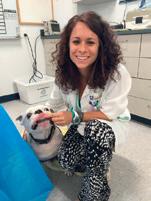
Kristen M. Couto, DVM, DACVIM (ONCOLOGY)
Vista Veterinary Specialists by Ethos Veterinary Health, Sacramento, California. Dr. Couto received her BS in Biology at The Ohio State University in 2009 and went on to receive her DVM degree at Ohio State in 2013. She completed a Small Animal Medicine and Surgery internship at North Carolina

C. Guillermo Couto, DVM, Dipl. ACVIM (Internal Medicine and Oncology) graduated from Buenos Aires University, Argentina in 1976. He spent 5 years as a private practice small animal practitioner, and then completed a clinical oncology residency at the University of California-Davis. He is co-author of the textbook, Small Animal Internal Medicine, with Dr. Richard W. Nelson, and he has more than 350 peer-reviewed articles and book chapters in the areas of oncology, hematology, and Greyhound medicine. Dr. Couto served as editor-in-chief of the Journal of Veterinary Internal Medicine, and received numerous teaching and service awards while at the university. After 30 years in academia, he is now providing consultation and educational services through Couto Veterinary Consultants, Hilliard, Ohio.
State University in 2014, and a Medical Oncology residency at the University of California, Davis in 2017. Her clinical interests include multi-modal management of oncology patients, as well as fostering the human-animal bond, especially through all aspects of a cancer diagnosis and treatment. She routinely provides continuing education for local veterinary medical associations in California on various oncology topics.

Autumn P. Davidson, DVM, MS, DACVIM Clinical Professor, Department of Medicine and Epidemiology, School of Veterinary Medicine, University of California, Davis. Dr. Davidson obtained her BS and MS at the University of California, Berkeley, with an emphasis in wildlife ecology and management. Dr. Davidson is a graduate of the School of Veterinary Medicine, University of California, Davis. She completed an internship in small animal medicine and surgery at Texas A&M University and a residency in small animal internal medicine at the University of California, Davis. She became board certified in internal medicine in 1992. Dr. Davidson specializes in small animal reproduction, pediatrics, and infectious disease. From 1998 to 2003, Dr. Davidson served as the Director of the San Rafael veterinary clinic at Guide Dogs for the Blind, Inc., overseeing the health care of 1000 puppies whelped annually, as well as a breeding colony of 350 and approximately 400 dogs in training. Dr. Davidson served on the board of directors for the Society for Theriogenology from 1996 to 1999, and the Institute for Genetic Disease Control from 1990 to 2002. Dr. Davidson consults with the Smithsonian Institution National Zoological Park in Washington, D.C., concerning theriogenology and internal medicine. She has authored numerous scientific publications and book chapters, and is a well-known international speaker on the topics of small animal theriogenology and infectious disease. She has traveled the world working with cheetahs, ring-tailed lemurs, and giant pandas in the field. Dr. Davidson was the 2003 recipient of the Hill’s Animal Welfare and Humane Ethics Award, which recognizes an individual who has advanced animal welfare through extraordinary service or by furthering humane principles, education, and understanding.

Ann-Marie Della Maggiore, DVM, DACVIM (Internal Medicine) MarQueen Pet Emergency and Specialty Group, Roseville, California. Dr. Della Maggiore earned her DVM degree from the University of California, Davis in 2008. She completed an internship in small animal medicine and surgery at Veterinary Medical and Surgical Group in Ventura, California. She then completed her small animal internal medicine residency at UC Davis and became ACVIM board certified in Internal Medicine. Following her residency, she took a clinical faculty position at UC Davis. In 2014 she transitioned to Assistant Professor of Clinical Internal Medicine in the Department of Medicine and Epidemiology. Her research and clinical interests are in small animal endocrinology. Dr. Della Maggiore now practices internal medicine at MarQueen Pet Emergency and Specialty Group in Roseville, California, a private referral practice. She has lectured both internationally and nationally in canine and feline internal medicine and primarily endocrinology.

Stephen P. DiBartola, DVM, DACVIM (Internal Medicine), Emeritus Professor of Medicine, Department of Veterinary Clinical Sciences, College of Veterinary Medicine, The Ohio State University, Columbus, Ohio. Dr. DiBartola received his DVM degree from the University of California, Davis in 1976. He completed an internship in small animal medicine and surgery at Cornell University in Ithaca, New York, in June 1977 and a residency in small animal medicine at The Ohio State University College of Veterinary Medicine from July 1977 to July 1979. He served as Assistant Professor of Medicine at the College of Veterinary Medicine, University of Illinois from July 1979 until August 1981. In August 1981, he returned to the Department of Veterinary Clinical Sciences at The Ohio State University as Assistant Professor of Medicine. He was promoted to Associate Professor in 1985 and to Professor in 1990. He received the Norden Distinguished Teaching Award in 1988 and the Zoetis Distinguished Teaching Award in 2014. His textbook Fluid Therapy in Small Animal Practice is in its fourth edition (2012). Dr. DiBartola currently serves as co-editor-in-chief for the Journal of Veterinary Internal Medicine. His clinical areas of interest include diseases of the kidney and fluid, acid-base, and electrolyte disturbances.

Eleanor C. Hawkins, DVM, Dipl. ACVIM (Internal Medicine), Profes sor, Department of Clinical Sciences and Director, Clinical Study Core, Comparative Medicine Institute North Carolina State University College of Veterinary Medicine. Dr. Hawkins has served as President and as Chair of the American College of Veterinary Internal Medicine (ACVIM), and as President of the Specialty of Small Animal Internal Medicine (ACVIM). She has been a board member of the Comparative Respiratory Society. She has been an invited lecturer in the United States, Europe, South America, and Japan. Dr. Hawkins is the author of many refereed publications and scientific proceedings. She has been a contributor or the respiratory editor for numerous well-known veterinary texts. Dr. Hawkins was the 2014 recipient of the ACVIM Distinguished Service Award. Her areas of research include canine chronic bronchitis, pulmonary function testing, and bronchoalveolar lavage as a diagnostic tool.


Jennifer A. Larsen, DVM, MS, PHD, DACVN, Chief of Service, Nutrition Support Service, Veterinary Medicine Teaching Hospital, Professor of Clinical Nutrition, Department of Molecular Biosciences, School of Veterinary Medicine, UC Davis. Dr. Larsen holds bachelor’s and master’s degrees in Animal Science and a DVM from UC Davis. She completed one year in local private practice before accomplishing a clinical nutrition residency at UC Davis. In 2007, Dr. Larsen attained Diplomate status from the American College of Veterinary Nutrition and completed a PhD in Nutritional Biology in 2008. In her current role, Dr. Larsen provides clinical nutritional consulting through the Nutrition Support Service at the UC Davis Veterinary Medical Teaching Hospital. She also mentors residents and students, and she teaches in the veterinary curriculum as well as for the Graduate Group of Nutritional Biology.
Michael R. Lappin, DVM, PhD, Dipl. ACVIM (Internal Medicine), is the Kenneth W. Smith Professor of Small Animal Clinical Veterinary Medicine at the College of Veterinary Medicine and Biomedical Sciences at Colorado State University and Director of the Center for Companion Animal Studies. After earning his DVM at Oklahoma State University in 1981, he completed a small animal internal medicine residency and earned his doctorate in parasitology at the University of Georgia. Dr. Lappin has studied feline infectious diseases and has authored more than 250 research papers and book chapters. Dr. Lappin is past associate editor for the Journal of Veterinary Internal Medicine and serves on the editorial board of Journal of Feline Medicine and Surgery. Dr. Lappin has received the Norden Distinguished Teaching Award, the Winn Feline Foundation Excellence in Feline Research Award, and the ESFM International Award for Outstanding Contribution to Feline Medicine.

J. Catharine R. Scott-Moncrieff, MA, VetMB, MS, DACVIM (SA), DECVIM (CA), Professor, Department of Veterinary Clinical Sciences, College of Veterinary Medicine, Purdue University. Dr. Scott-Moncrieff graduated from the University of Cambridge in 1985 and completed an internship in small animal medicine and surgery at the University of Saskatchewan and a residency in internal medicine at Purdue University. In 1989, she joined the faculty of Purdue University, where she is currently Professor of small animal internal medicine and Head of the Department of Veterinary Clinical Sciences. Her clinical and research interests include immune-mediated hematologic disorders and clinical endocrinology. She is the author of numerous manuscripts and book chapters and has lectured extensively nationally and internationally.

Susan M. Taylor, DVM, DACVIM (Internal Medicine), Professor of Small Animal Medicine, Department of Small Animal Clinical Sciences, Western College of Veterinary Medicine, University of Saskatchewan. Dr. Taylor has received several awards for teaching excellence, including the Norden Distinguished Teaching Award. She has authored numerous refereed manuscripts and book chapters and one textbook (Small Animal Clinical Techniques, Elsevier 2016). She is also the co-creator of a web-based program for teaching clinical neurology and neuroanatomy (WCVM NeuroVet). Dr. Taylor has presented research and continuing education lectures throughout Canada, the United States, and abroad. Clinical, academic, and research interests include neurology, neuromuscular disease, clinical immunology, and infectious disease. Dr. Taylor has an active research program investigating medical and neurologic disorders affecting canine athletes, particularly the inherited syndromes of dynamin-associated exercise-induced collapse in Labrador Retrievers (d-EIC) and Border Collie collapse.

Jessica L. Ward, DVM, DACVIM (Cardiology), Assistant Professor, Department of Veterinary Clinical Sciences, Iowa State University. Dr. Ward obtained her DVM degree from North Carolina State University in 2011. After a small animal rotating internship at The Ohio State University, she returned to NC State to complete her residency training in Cardiology. Dr. Ward joined the faculty at Iowa State University in 2015, where she teaches clinical cardiology and recently received the college’s Award for Early Achievement in Teaching. She has authored a number of manuscripts and scientific proceedings, and she has given invited lectures in the United States and China. Her research interests include point-of-care ultrasound, the cardiovascular effects of steroids, and the scholarship of teaching and learning.

Wendy A. Ware, DVM, MS, DACVIM (Cardiology), Professor, Departments of Veterinary Clinical Sciences and Biomedical Sciences, Iowa State University. Dr. Ware earned her DVM degree and completed her residency training at The Ohio State University. At Iowa State, she taught clinical cardiology and cardiovascular physiology, and she served as clinical cardiologist in the ISU Lloyd Veterinary Medical Center for many years. Dr. Ware authored the highly illustrated clinical textbook Cardiovascular Disease in Small Animal Medicine and is preparing an expanded second edition (Cardiovascular Disease in Companion Animal Medicine). She also has written and edited the case-based Self-Assessment Color Review of Small Animal Cardiopulmonary Medicine (2012, Manson Publishing), as well as numerous journal articles and more than 60 book chapters. Dr. Ware has been an invited speaker at many continuing education programs. Her other professional activities have included service as President and Chairman of the Board of Regents of the American College of Veterinary Internal Medicine, associate editor for Cardiology for the Journal of Veterinary Internal Medicine, and reviewer for several veterinary scientific journals.

Penny J. Watson, MA, Vet.MD, CertVR, DSAM, DECVIM, MRCVS, Senior Lecturer in Small Animal Medicine, Queen’s Veterinary School Hospital, University of Cambridge, United Kingdom. Dr. Watson received her veterinary degree from the University of Cambridge. She spent four years in private veterinary practice in the United Kingdom before returning to Cambridge Veterinary School, where she now helps run the small animal internal medicine teaching hospital. She is both a member of the Royal College of Veterinary Surgeons and a European recognized specialist in small animal internal medicine. Dr. Watson was on the examination board of the European College of Veterinary Internal Medicine (ECVIM) for five years, two as Chair. Her clinical and research interests are focused on gastroenterology, hepatology, pancreatic disease, and comparative metabolism. She gained a doctorate for studies of canine chronic pancreatitis in 2009 and continues to research, lecture, and publish widely on aspects of canine and feline pancreatic and liver disease.

Jodi L. Westropp, DVM, PhD, DACVIM (Internal Medicine), Associate Professor, School of Veterinary Medicine, University of California, Davis. Dr. Westropp received her DVM degree, as well as her residency training in internal medicine, and PhD from The Ohio State University prior to joining the faculty at UC Davis in 2003. Her clinical and research interests include feline idiopathic cystitis, urinary tract infections, urinary incontinence, and urolithiasis. She is the author of numerous manuscripts and book chapters and has lectured extensively nationally and internationally. She is also the director of the G.V. Ling Urinary Stone Analysis Laboratory at UC Davis.

Michael D. Willard, DVM, MS, DACVIM (Internal Medicine), Senior Professor, Department of Veterinary Small Animal Medicine and Surgery, Texas A&M University. Dr. Willard is an internationally recognized veterinary gastroenterologist and endoscopist. He has received the National SCAVMA Teaching Award for clinical teaching and the National Teaching Award. A past President of the Comparative Gastroenterology Society and past Secretary of the specialty of Internal Medicine, his main interests are clinical gastroenterology and endoscopy (flexible and rigid). Dr. Willard has published more than 85 journal articles and 140 book chapters on these topics and has given more than 3600 hours of invited lectures on these subjects around the world. Dr. Willard is an associate editor for Journal of Veterinary Internal Medicine

Andrew Woolcock, DVM, DACVIM (Internal Medicine), Assistant Professor, Department of Veterinary Clinical Sciences, School of Veterinary Medicine, Purdue University. Dr. Woolcock graduated from Michigan State University in 2011; he completed an internship in small animal medicine and surgery at North Carolina State University and a residency in small animal internal medicine at the University of Georgia. Dr. Woolcock joined the faculty of Purdue University in 2015, where he is currently Assistant Professor of small animal internal medicine. His clinical and research interests include immune-mediated hematologic disorders and oxidative stress in inflammatory disease states.
We dedicate this book to Kay and Graciela. This project would not have been possible without their continued understanding, encouragement, and patience. I (Guillermo) also dedicate this book to Jason and Kristen, who in following my path have made me the proudest dad. Having co-authored the oncology section with Kristen is one of the highlights of my career.
In the sixth edition of Small Animal Internal Medicine, we have retained our original goal of creating a practical text with a strong clinical slant that is useful for both practitioners and students. We have continued to limit authorship, with each author selected for her or his clinical expertise in their field, to ensure consistency within each section and allowing differences to be expressed when topics overlap between sections of the book; this illustrates that frequently different approaches get us to the same destination: a diagnosis. We have continued to focus on the clinically relevant aspects of the most common problems in internal medicine, presenting information in a concise, understandable, and logical format. Extensive use of tables, algorithms, cross-referencing within and among sections and a comprehensive index help make Small Animal Internal Medicine a quick, easy-to-use reference textbook.
ORGANIZATION
As before, the book contains 14 sections organized by organ systems (e.g., cardiology, respiratory) or when multiple systems are involved, by discipline (e.g., oncology, infectious diseases, immune-mediated disorders). Each section, when possible, begins with a chapter on clinical signs and differential diagnoses and is followed by chapters on indications, techniques, and interpretation of diagnostic tests; general therapeutic principles; specific diseases; and finally a table listing recommended drug dosages for drugs commonly used to treat disorders within the appropriate organ system or discipline. Each section is supported extensively by tables, photographs, schematic illustrations, videos, and algorithms, which address clinical presentations, differential diagnoses, diagnostic approaches, and treatment recommendations. Selected references and recommended readings are provided under the heading “Suggested Readings” at the end of each chapter. In addition, specific studies are cited in the text by author name and year of publication and are included in the Suggested Readings.
KEY FEATURES OF THE SIXTH EDITION
We have retained all of the features that were popular in the first five editions and have significantly updated and expanded the new sixth edition. Features in the sixth edition include:
Contents
8 Myocardial Diseases of the Cat, 158
Hypertrophic Cardiomyopathy, 158
Secondary Myocardial Hypertrophy, 167
Restrictive Cardiomyopathy, 168
Dilated Cardiomyopathy, 169
Other Myocardial Diseases, 171
9 Pericardial Disease and Cardiac Tumors, 174
Congenital Pericardial Disorders, 174
Pericardial Effusion, 176
Constrictive Pericardial Disease, 184
Cardiac Tumors, 185
10 Pulmonary Hypertension and Heartworm Disease, 190
Pulmonary Hypertension, 190 Heartworm Disease, 193 Heartworm Disease in Dogs, 194 Heartworm Disease in Cats, 203
Angiostrongylosis, 207
11 Systemic Arterial Hypertension, 211
General Considerations, 211
12 Thromboembolic Disease, 221
General Considerations, 221
Pulmonary Thromboembolism, 224
Systemic Arterial Thromboembolism in Cats, 224
Systemic Arterial Thrombosis in Dogs, 230
Venous Thrombosis, 233
PART TWO RESPIRATORY SYSTEM DISORDERS, 240
Eleanor C. Hawkins
13 Clinical Manifestations of Nasal Disease, 240
General Considerations, 240
Nasal Discharge, 240
Sneezing, 244
Stertor, 245
Facial Deformity, 245
14 Diagnostic Tests for the Nasal Cavity and Paranasal Sinuses, 247
Nasal Imaging, 247
Rhinoscopy, 250
Frontal Sinus Exploration, 252
Nasal Biopsy: Indications and Techniques, 253
Nasal Cultures: Sample Collection and Interpretation, 255
15 Disorders of the Nasal Cavity, 257
Feline Upper Respiratory Infection, 257
Bacterial Rhinitis, 259
Nasal Mycoses, 260
Nasal Parasites, 263
Feline Nasopharyngeal Polyps, 264
Canine Nasal Polyps, 264
Nasal Tumors, 265
Allergic Rhinitis, 266
Idiopathic Rhinitis, 266
16 Clinical Manifestations of Laryngeal and Pharyngeal Disease, 271
Clinical Signs, 271
Differential Diagnoses for Laryngeal Signs in Dogs and Cats, 272
Differential Diagnoses for Pharyngeal Signs in Dogs and Cats, 272
17 Diagnostic Tests for the Larynx and Pharynx, 273
Radiography, 273
Ultrasonography, 273
Fluoroscopy, 273
Computed Tomography and Magnetic Resonance Imaging, 273
Laryngoscopy and Pharyngoscopy, 273
18 Disorders of the Larynx and Pharynx, 277
Laryngeal Paralysis, 277
Brachycephalic Airway Syndrome, 279
Obstructive Laryngitis, 280
Laryngeal Neoplasia, 281
19 Clinical Manifestations of Lower Respiratory Tract Disorders, 282
Clinical Signs, 282
Diagnostic Approach to Dogs and Cats With Lower Respiratory Tract Disease, 284
20 Diagnostic Tests for the Lower Respiratory Tract, 287
Thoracic Radiography, 287
Ultrasonography, 295
Computed Tomography and Magnetic Resonance Imaging, 295
Nuclear Imaging, 296
Parasitology, 296
Serology, 298
Urine Antigen Tests, 298
Polymerase Chain Reaction Tests, 298
Tracheal Wash, 298
Nonbronchoscopic Bronchoalveolar Lavage, 305
Transthoracic Lung Aspiration and Biopsy, 310
Bronchoscopy, 312
Thoracotomy or Thoracoscopy With Lung Biopsy, 312
Blood Gas Analysis, 313
Pulse Oximetry, 318
21 Disorders of the Trachea and Bronchi, 321
General Considerations, 321
Canine Infectious Respiratory Disease Complex, Including Canine Influenza, 321
Canine Chronic Bronchitis, 324
Feline Bronchitis (Idiopathic), 328
Tracheobronchomalacia (Collapsing Trachea), 333
Allergic Bronchitis, 337
Oslerus Osleri, 337
22 Disorders of the Pulmonary Parenchyma and Vasculature, 340
Viral Pneumonias, 340
Toxoplasmosis, 343
Fungal Pneumonia, 344
Pulmonary Parasites, 344
Aspiration Pneumonia, 346
Eosinophilic Lung Disease (Eosinophilic Bronchopneumopathy), 348
Idiopathic Interstitial Pneumonias, 349
Pulmonary Neoplasia, 352
Pulmonary Hypertension, 353
Pulmonary Thromboembolism (PTE), 354
Pulmonary Edema, 356
23 Clinical Manifestations and Diagnostic Tests of Pleural Cavity and Mediastinal Disease, 360
Clinical Signs, 360
General Diagnostic Approach, 360
Diagnostic Approach for Pleural Effusions Based on Fluid Cytology, 361
Diagnostic Tests for the Pleural Cavity and Mediastinum, 364
Chest Tubes: Indications and Placement, 367
24 Disorders of the Pleural Cavity and Mediastinum, 371
Pyothorax, 371
Chylothorax, 374
Neoplastic Effusion, 375
Pneumothorax, 376
Mediastinal Masses, 377
Pneumomediastinum, 378
25 Emergency Management of Respiratory Distress, 379
General Considerations, 379
Emergency Management Based on Localization, 379
Oxygen Supplementation and Ventilation, 383
PART THREE DIGESTIVE SYSTEM DISORDERS, 389
Michael D. Willard
26 Clinical Manifestations of Gastrointestinal Disorders, 389
Dysphagia, Halitosis, and Drooling, 389
Distinguishing Regurgitation From Vomiting From Expectoration, 391
Regurgitation, 392 Vomiting, 394
Hematemesis, 397
Diarrhea, 398
Hematochezia, 402
Melena, 402
Tenesmus, 403
Constipation, 404
Fecal Incontinence, 405
Weight Loss, 405
Anorexia/Hyporexia, 407
Abdominal Effusion, 407
Acute Abdomen, 407
Abdominal Pain, 408
Abdominal Distention or Enlargement, 408 27 Diagnostic Tests for the Alimentary Tract, 412
Physical Examination, 412
Routine Laboratory Evaluation, 412
Fecal Parasitic Evaluation, 413
Fecal Digestion Tests, 413
Bacterial Fecal Culture, 414
ELISA, IFA, and PCR Fecal Analyses, 414
Cytologic Evaluation of Feces, 415
Electron Microscopy, 415
Radiography of the Alimentary Tract, 415
Ultrasonography of the Alimentary Tract, 415
Imaging of the Oral Cavity, Pharynx, and Esophagus, 416
Imaging of the Stomach and Small Intestine, 419
Peritoneal Fluid Analysis, 423
Digestion and Absorption Tests, 423
Serum Concentrations of Vitamins, 423
Endoscopy, 424
Biopsy Techniques and Submission, 429 28 General Therapeutic Principles, 432
Fluid Therapy, 432
Dietary Management, 434
Antiemetics, 437
Antacid Drugs, 438
Gastric and Cytoprotective Drugs, 439
Intestinal “Protectants”, 440
Digestive Enzyme Supplementation, 440
Motility Modifiers, 440
Antiinflammatory and Antisecretory Drugs, 441
Antibacterial Drugs, 442
Probiotics/Prebiotics, 443
Fecal Transplantation, 443
Anthelmintic Drugs, 443
Enemas, Laxatives, and Cathartics, 443
29 Disorders of the Oral Cavity, Pharynx, and Esophagus, 447
Masses, Proliferations, and Inflammation of the Oropharynx, 447
Dysphagias, 451
Esophageal Weakness/Megaesophagus, 452
Esophageal Obstruction, 456
30 Disorders of the Stomach, 462
Gastritis, 462
Gastric Outflow Obstruction/Gastric Stasis, 465
Gastrointestinal Ulceration/Erosion, 470
Infiltrative Gastric Diseases, 471
31 Disorders of the Intestinal Tract, 474
Acute Diarrhea, 474
Infectious Diarrhea, 476
Bacterial Diseases: Common Themes, 480
Alimentary Tract Parasites, 485
Maldigestive Disease, 491
Non–Protein-Losing Malabsorptive Diseases, 491
Relation of Small Intestinal Dietary-Responsive Diarrhea and Antibiotic-Responsive Enteropathy, 492
Small Intestinal “Inflammatory Bowel Disease” (Chronic Enteropathy), 493
Protein-Losing Enteropathy, 495
Intestinal Obstruction, 498
Miscellaneous Intestinal Diseases, 502
Neoplasms of the Small Intestine, 502
Neoplasms of the Large Intestine, 503
Diseases of the Perineal Area and Anus, 504
Perianal Neoplasms, 506
Constipation, 506
32 Disorders of the Peritoneum, 510
Inflammatory Diseases, 510
Hemoabdomen, 513
Miscellaneous Peritoneal Disorders, 513
PART FOUR HEPATOBILIARY AND EXOCRINE PANCREATIC DISORDERS, 518
Penny J. Watson
33 Clinical Manifestations of Hepatobiliary and Pancreatic Disease, 518
General Considerations, 518
Gastrointestinal Signs, 518
Abdominal Pain, 519
Polyuria and Polydipsia, 519
Hepatic Encephalopathy, 522
Change in Liver Size, 524
Jaundice, Bilirubinuria, and Change in Fecal Color, 525
Coagulopathies, 527
Protein-Calorie Malnutrition, 529
34 Diagnostic Tests for the Hepatobiliary and Pancreatic System, 531
Diagnostic Approach, 531
Diagnostic Imaging, 545
Biopsy and Cytology, 553
35 Hepatobiliary Diseases in the Cat, 561
General Considerations, 561
Hepatic Lipidosis, 561
Biliary Tract Disease, 567
Extrahepatic Bile Duct Obstruction, 573
Ductal Plate Abnormalities, 574
Hepatic Amyloidosis, 575
Feline Copper Storage Disease, 576
Neoplasia, 576
Congenital Portosystemic Shunts, 577
Hepatobiliary Infections, 579
Toxic Hepatopathy, 580
Hepatobiliary Manifestations of Systemic Disease, 582
36 Hepatobiliary Diseases in the Dog, 584
General Considerations, 584
Chronic Hepatitis, 584
Acute Hepatitis, 598
Biliary Tract Disorders, 599
Congenital Vascular Disorders, 603
Focal Hepatic Lesions, 612
Hepatocutaneous Syndrome and Superficial Necrolytic Dermatitis, 615
Secondary Hepatopathies, 616
37 The Exocrine Pancreas, 620
General Considerations, 620
Pancreatitis, 620
Exocrine Pancreatic Insufficiency, 636
Exocrine Pancreatic Neoplasia, 641
Pancreatic Abscesses, Cysts, and Pseudocysts, 641
PART FIVE URINARY TRACT DISORDERS, 649
Stephen P. DiBartola and Jodi L. Westropp
38 Clinical Manifestations of Urinary Disorders, 649
Clinical Approach, 649
Presenting Problems, 650
39 Diagnostic Tests for the Urinary System, 658
Glomerular Function, 658
Tubular Function, 662
Urinalysis, 664
Microbiology, 670
Diagnostic Imaging, 671
Urodynamic Testing, 672
Urethrocystoscopy, 672
Renal Biopsy, 672
40 Glomerular Disease, 675
Normal Structure, 675
Pathogenesis, 676
Mechanisms of Immune Injury, 677
Progression, 677
Histopathologic Lesions of Glomerulonephritis, 678
Amyloidosis, 679
Clinical Findings, 680
Management of Patients With Glomerular Disease, 681
Complications, 684
41 Acute Kidney Injury and Chronic Kidney Disease, 686
Acute Kidney Injury, 686
Chronic Kidney Disease, 692
42 Bacterial Cystitis, Pyelonephritis, and Prostatitis in the Dog and Cat, 704
Introduction, 704
Classification of Bacterial Cystitis, 704
Bacterial Prostatitis, 710
43 Canine and Feline Urolithiasis, 712
Introduction, 712
Calcium Oxalate Calculi, 714
Ureterolithiasis in Dogs and Cats, 714
Conclusions, 722
44 Obstructive and Nonobstructive Feline Idiopathic Cystitis, 724
Introduction, 724
Pathophysiology, 724
Diagnostic Tests for Cats With Lower Urinary Tract Signs, 725
Treatment Options, 726
Conclusions, 729
45 Disorders of Micturition, 730
Anatomy and Physiology, 730
Definitions and Types of Urinary Incontinence, 730
PART SIX ENDOCRINE DISORDERS, 740
Richard W. Nelson and Ann-Marie Della Maggiore
46 Disorders of the Hypothalamus and Pituitary Gland, 740
Polyuria and Polydipsia, 740
Diabetes Insipidus, 741
Primary (Psychogenic) Polydipsia, 746
Endocrine Alopecia, 747
Feline Acromegaly, 749
Pituitary Dwarfism, 753
47 Disorders of the Parathyroid Gland, 758
Classification of Hyperparathyroidism, 758
Primary Hyperparathyroidism, 758
Primary Hypoparathyroidism, 763
48 Disorders of the Thyroid Gland, 767
Hypothyroidism in Dogs, 767
Hypothyroidism in Cats, 785
Hyperthyroidism in Cats, 788
Canine Thyroid Neoplasia, 800
49 Disorders of the Endocrine Pancreas, 806
Hyperglycemia, 806
Hypoglycemia, 806
Diabetes Mellitus in Dogs, 809
Diabetes Mellitus in Cats, 830
Diabetic Ketoacidosis, 840
Insulin-Secreting β-Cell Neoplasia, 847
Gastrin-Secreting Neoplasia, 853
50 Disorders of the Adrenal Gland, 857
Hyperadrenocorticism in Dogs, 857
Occult (Atypical) Hyperadrenocorticism in Dogs, 878
Hyperadrenocorticism in Cats, 878
Hypoadrenocorticism, 883
Atypical Hypoadrenocorticism, 889
Pheochromocytoma, 889
Incidental Adrenal Mass, 892
PART SEVEN METABOLIC AND ELECTROLYTE DISORDERS, 898
Jennifer A. Larsen and Ann-Marie Della Maggiore
51 Weight Loss and Obesity, 898
Polyphagia With Weight Loss, 898
Obesity, 899
52 Hyperlipidemia, 908
Hyperlipidemia, 908
53 Electrolyte Imbalances, 915
Hypernatremia, 915
Hyponatremia, 917
Hyperkalemia, 919
Hypokalemia, 921
Hypercalcemia, 923
Hypocalcemia, 927
Hyperphosphatemia, 929
Hypophosphatemia, 930
Hypomagnesemia, 931
Hypermagnesemia, 933
PART EIGHT REPRODUCTIVE SYSTEM DISORDERS, 935
Autumn
P. Davidson
54 The Practice of Theriogenology, 935
The Prebreeding Consultation, 935
Estrous Cycle of the Bitch, 937
Canine Ovulation Timing: Evaluation of the Estrous Cycle to Identify the Optimal Time to Breed, 940
The Dog and Tom, 945
Fresh, Fresh Chilled, and Frozen Artificial Inseminations (AI), 947
Estrous Cycle of the Queen, 948
Obstetrics, 949
55 Clinical Conditions of the Bitch and Queen, 953
Normal Variations of the Estrous Cycle, 953
Abnormalities of the Canine Estrous Cycle, 954
Manipulation of the Estrous Cycle, 958
Prepartum Disorders, 960
Pregnancy Loss Associated With Infectious Disease, 963
Abortion Associated With Other Bacteria, 965
Metabolic Disorders, 966
Parturition and Parturient Disorders, 968
Postpartum Disorders, 974
Disorders of the Reproductive Tract in Ovariohysterectomized Bitches and Queens, 979
Infertility/Subfertility in the Bitch and Queen, 984
Microbiology and Female Fertility, 984
Cystic Endometrial Hyperplasia/Pyometra Complex, 985
56 Clinical Conditions of the Dog and Tom, 990
Cryptorchidism, 990
Testicular Torsion, 991
Persistent Penile Frenulum, 992
Urethral Prolapse, 992
Scrotal Dermatitis, 992
Balanoposthitis, 992
Priapism, Paraphimosis, and Phimosis, 993
Testicular Neoplasia in Stud Dogs, 996
Microbiology and Male Fertility, 997
Prostatic Disorders in the Valuable Stud Dog, 1001
Congenital Infertility, 1005
Disorders of Sexual Differentiation, 1005
57 Neonatology and Pediatrics, 1007
Neonatal Resuscitation, 1007
Anomalies Apparent at the Neonatal Exam, 1013
PART NINE NERVOUS SYSTEM AND NEUROMUSCULAR DISORDERS, 1037
Susan M. Taylor
58 Lesion Localization and the Neurologic Examination, 1037
Functional Anatomy of the Nervous System and Lesion Localization, 1037
Screening Neurologic Examination, 1043
Diagnostic Approach, 1061
59 Diagnostic Tests for Nervous System and Neuromuscular Disorders, 1063
Neurologic Examination, 1063
Routine Laboratory Evaluation, 1063
Immunology, Serology, and Microbiology, 1064
Routine Systemic Diagnostic Imaging, 1064
Diagnostic Imaging of the Nervous System, 1064
Cerebrospinal Fluid Collection and Analysis, 1067
Electrodiagnostic Testing, 1071
Biopsy of Muscle and Nerve, 1073
60 Intracranial Disorders, 1074
General Considerations, 1074
Abnormal Mentation, 1074
Hypermetria, 1074
Diagnostic Approach to Animals With Intracranial Disease, 1075
Intracranial Disorders, 1075
61 Loss of Vision and Pupillary Abnormalities, 1084
General Considerations, 1084
Neuroophthalmologic Evaluation, 1084
Loss of Vision, 1087
Horner Syndrome, 1089
Protrusion of the Third Eyelid, 1091
62 Seizures and Other Paroxysmal Events, 1093
Seizures, 1093
Nonepileptic Paroxysmal Events, 1093
Seizure Descriptions, 1093
Seizure Classification and Localization, 1094
Differential Diagnosis, 1095
Diagnostic Evaluation, 1098
Antiepileptic Drug Therapy, 1100
Antiepileptic Drugs, 1101
Alternative Therapies, 1104
Emergency Therapy for Dogs and Cats in Status
Epilepticus, 1104
Paroxysmal Events That Are Not Seizures, 1105
63 Head Tilt, 1109
General Considerations, 1109
Localization of Lesions, 1109
Disorders Causing Peripheral Vestibular Disease, 1111
Disorders Causing Central Vestibular Disease, 1115
64 Encephalitis, Myelitis, and Meningitis, 1117
General Considerations, 1117
Neck Pain, 1117
Noninfectious Inflammatory Disorders, 1119
Infectious Inflammatory Disorders, 1123
65 Disorders of the Spinal Cord, 1130
General Considerations, 1130
Localizing Spinal Cord Lesions, 1130
Peracute or Acute Spinal Cord Dysfunction, 1133
Progressive Spinal Cord Dysfunction, 1142
66 Disorders of Peripheral Nerves and the Neuromuscular Junction, 1157
General Considerations, 1157
Focal Neuropathies, 1157
Polyneuropathies, 1163
Disorders of the Neuromuscular Junction, 1168
Dysautonomia, 1172
67 Disorders of Muscle, 1174
General Considerations, 1174
Inflammatory Myopathies, 1174
Acquired Metabolic Myopathies, 1178
Noninflammatory Inherited Myopathies, 1179
Involuntary Alterations in Muscle Tone and Movement, 1181
Dyskinesias, 1183
Disorders Causing Exercise Intolerance or Collapse, 1183
PART TEN JOINT DISORDERS, 1187
Susan M. Taylor
68 Clinical Manifestations of and Diagnostic Tests for Joint Disorders, 1187
General Considerations, 1187
Clinical Manifestations, 1187
Diagnostic Approach, 1187
Diagnostic Tests, 1189
69 Disorders of the Joints, 1195
General Considerations, 1195
Noninflammatory Joint Disease, 1195
Infectious Inflammatory Joint Diseases, 1197
Noninfectious Polyarthritis: Nonerosive, 1201
Noninfectious Polyarthritis: Erosive, 1206
PART ELEVEN IMMUNE-MEDIATED DISORDERS, 1211
Andrew Woolcock and J. Catharine R. Scott-Moncrieff
70 Pathogenesis of Immune-Mediated Disorders, 1211
General Considerations and Definition, 1211
Immunopathologic Mechanisms, 1211
Pathogenesis of Immune-Mediated Disorders, 1212
Organ Systems Involved in Autoimmune Disorders, 1214
71 Diagnostic Testing for Immune-Mediated Disease, 1215
Clinical Diagnostic Approach, 1215
Specific Diagnostic Tests, 1215
Antiplatelet Antibodies, 1216
72 Treatment of Primary Immune-Mediated Diseases, 1220
Principles of Treatment of Immune-Mediated Diseases, 1220
Overview of Immunosuppressive Therapy, 1220
Glucocorticoids, 1221
Azathioprine, 1223
Chlorambucil, 1224
Cyclosporine (Ciclosporin), 1224
Leflunomide, 1226
Mycophenolate Mofetil, 1227
Splenectomy, 1228
Human Intravenous Immunoglobulin, 1228
Pentoxifylline, 1228
Vincristine, 1229
73 Common Immune-Mediated Diseases, 1231
Immune-Mediated Hemolytic Anemia, 1231
Feline Immune-Mediated Hemolytic Anemia, 1238
Pure Red Cell Aplasia, 1238
Idiopathic Aplastic Anemia, 1240
Immune-Mediated Thrombocytopenia, 1240
Immune-Mediated Neutropenia, 1244
Polyarthritis, 1245
Systemic Lupus Erythematosus, 1247
Glomerulonephritis, 1249
Acquired Myasthenia Gravis, 1250
Perianal Fistula, 1251
Immune-Mediated Myositis, 1252
PART TWELVE ONCOLOGY, 1257
C. Guillermo Couto
74 Cytology, 1257
General Considerations, 1257
Fine-Needle Aspiration, 1257
Impression Smears, 1258
Staining of Cytologic Specimens, 1258
Interpretation of Cytologic Specimens, 1258
75 Principles of Cancer Treatment, 1265
General Considerations, 1265

